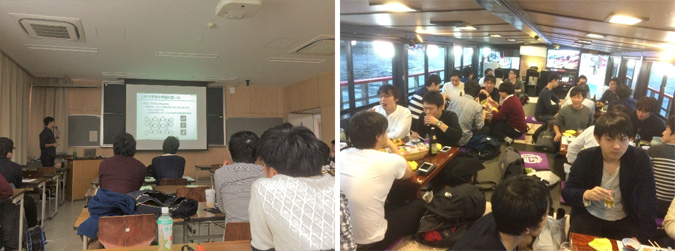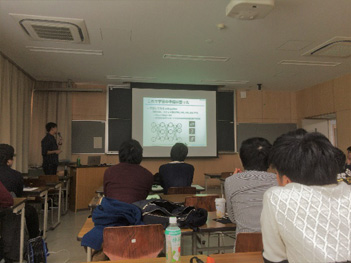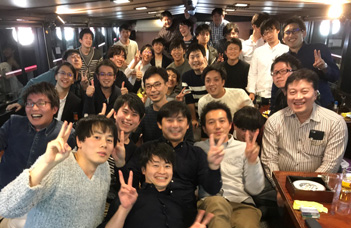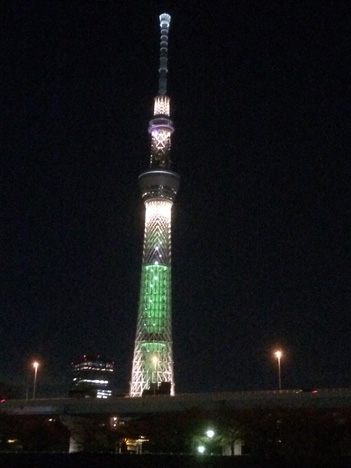2017.11.11:48th CMPFG regular meeting
The 48th CMPFG regular meeting has been held in Tokyo Metropolitan University, Tokyo, Japan. Dr. Kadoya, Mr. Chiba (assistant), Mr. Takayama (assistant), Mr. Kanai (D3), Mr. Nakajima (D2), Mr. Miyasaka (D1), Mr. Abe (M2), Mr. Ieko (M2), Mr. Ikeda (M2), Mr. Kon (M2), Mr. Kajikawa (M1), Mr. Sato (M1), Mr. Matsumoto (M1), and Mr. Matsuda (M1) have attended it.
■Date: 2017.11.11
■Venue: Tokyo Metropolitan University, Tokyo, Japan
■Conference name:48th CMPFG regular meeting

Shohei Matsuda(M1)
We are pleased to report that we attended the 48th regular meeting of CMPFG held on November 11, 2017 at the Arakawa Campus of Tokyo Metropolitan University with Dr. Kadoya, Dr. Chiba Dr. Takayama, Mr. Kanai(D3), Mr. Nakajima(D2), Mr. Miyasaka(D1), Mr. Abe(M2), Mr. Ieko(M2), Mr. Ikeda(M2), Mr. Kon(M2), Mr. Kajikawa(M1), Mr. Sato(M1), Mr. Matsumoto(M1) and Mr. Matsuda(M1).
The theme of this year’s seminar was “Radiotherapy that Opens the Way to the Future,” and four doctors from the National Cancer Center Hospital and Showa University gave lectures on the topic. In the morning session, Dr. Wakita gave a lecture on “deep learning” and discussed what deep learning is and how it can be applied to radiotherapy, which has become a hot topic in recent years. How can it be applied to radiotherapy? In the luncheon seminar, Dr. Okamoto gave a lecture on “MR-linac. He gave an overview of MRIdian, the first MR-integrated radiotherapy device in Japan, and was struck by its advantage over conventional CT-based planning in that it enables position matching in real time during irradiation. In the afternoon session, Dr. Miyaura and Dr. Nakamura gave lectures on “Remote Treatment Planning Support” and “Clinical Introduction of BNCT Principles,” respectively, and we learned that information sharing among hospitals and the construction of a system for this purpose are essential to correct the disparity in healthcare in the region. He also mentioned that BNCT (Boron Neutron Capture Therapy) has many issues to be solved in its clinical application, such as verification of dose characteristics and modeling in the head, and that the commissioning of BNCT is still in a state of exploration.
He also reminded us that, no matter how advanced radiotherapy technology may become and how sophisticated the treatment methods may be, dose measurement and commissioning of the equipment are indispensable for clinical application, and that we must consider the physical characteristics of the equipment by ourselves. I would like to use this experience as food for thought in my training as a physicist in the future.
After the seminar, the CMPFG celebrated its memorable 10th anniversary, and the opinion exchange meeting was held on a houseboat in Asakusa. There, we were able to interact with doctors from various fields and hear valuable stories about actual clinical practice and research.
Finally, I would like to take this opportunity to thank the doctors at the National Cancer Center Hospital and Showa University, the members of the Clinical Medical Physics Research Group, and the members of the Department of Radiation Science, Graduate School of Health Science, Tokyo Metropolitan University for providing us with such a valuable opportunity. Thank you very much.

Deep learning is a hot topic these days

Reception

Sky Tree viewed from a houseboat
